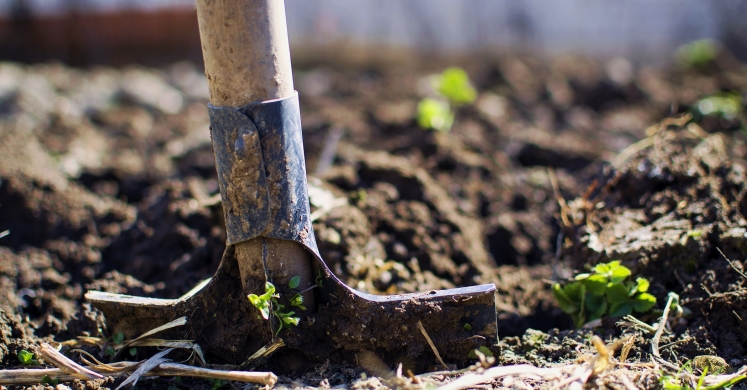Blog

#bioPGH: Mad About Mud
 A resource of Biophilia: Pittsburgh, #bioPGH is a weekly blog and social media series that aims to encourage both children and adults to reconnect with nature and enjoy what each of our distinctive seasons has to offer.
A resource of Biophilia: Pittsburgh, #bioPGH is a weekly blog and social media series that aims to encourage both children and adults to reconnect with nature and enjoy what each of our distinctive seasons has to offer.
There may have been some flurries here and there, but we’ve had a roughly week-long streak without snow on the ground. This means we’ve gotten a glorious glimpse of an underappreciated treasure, a treasure that is more valuable than all the diamonds and jewels in the world: dirt!
Yes, indeed, dirt — or, soil, to be more precise — is the very basis of global food system, and nature needs soil to sustain plant life. Let’s explore a bit of the science behind wonderful dirt!
First of all, where does the soil even come from? There are a few different sources, actually. Most of the tiny particles that make up soil are remnants of rock — rock that was weather-beaten, rock that was ground against other rocks, or really any way that rock can be broken down over time. Microbes can play a role in this process: tiny living things such as bacteria, algae, and fungi can all secrete chemicals that ever so slightly and ever so slowly either change the chemical composition of the surface of their home rock (which makes it more vulnerable to weathering), or they can break down tiny bits of rock altogether. This is a very gradual process, but it’s constantly occurring — priming new soil for us.
Another important source of material for soil is organic material. Fallen leaves, dead trees and plants, animal and insect remains or anything previously living thing becomes a part of the decomposition cycle. Insects, worms, fungi and bacteria all contribute to the breakdown of organic material, which ultimately contributes to the nutrients in soil.
Other sources of material for soil can vary depending on geography and local geology. In some areas, volcanic ash makes up a significant percentage of the soil, while in others, regular flooding from rivers or other waterways provides seasonal sediment deposits (alluvial soil). Probably my personal favorite contribution to the soil makes up a very low percentage of the composition, but you can find this fairly evenly distributed across the globe: star dust! Well, micrometeorite particles, technically. The Earth actually is quite constantly pelted with micrometeorites as a part of its normal jaunt around the sun, and these little bits of space rock easily mix in with our soil.
All of these different parent materials and processes that create soil will ultimately determine the texture, chemical composition and nutrient levels in the soil of a given area. In addition soil’s physical and chemical properties are also influenced by the climate and local geology, not to mention the very important microbial life present in the soil. In fact, a single teaspoon of high quality soil can harbor billions of individual bacteria, fungi and other microscopic living things!
I wish I could say that’s the dirt on soil, but we barely even scratched the surface! Soils across the state, the country, and all across the world are different, and there is no end to the exploration. It’s exciting to think that dirt on the ground came from rock that may have even been stepped on by dinosaurs. So the next time you’re walking across the ground, don’t forget about all of the history and communities of living things just beneath your feet!
Connecting to the Outdoors Tip: You can easily investigate the soil texture in your backyard, and have some muddy fun while doing so! The soil texture is the proportion of sand, silt, and clay present in the total soil. Typically, sand is defined as particles that are 2 mm to 0.5 mm in diameter, clay is less than 0.002 mm, and silt is anything in between. This video from the Kansas State University shows you how to estimate roughly the proportion of sand versus clay in soil without needing to use a lab. You can turn this into an inquiry-based activity by trying out this activity with the soil from your own garden or backyard, and then try adding quantities of sand and predict how that will change your results.
Continue the Conversation: Share your nature discoveries with our community by posting to Twitter and Instagram with hashtag #bioPGH, and R.S.V.P. to attend our next Biophilia: Pittsburgh meeting.
Resources
University of Wisconsin-Madison SPNO: Micrometeorites
Soil Science Society of America
Dirt Science: An Introduction to Soil Systems
Photo Credits: Pexels CC0

